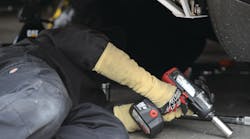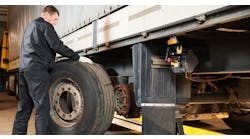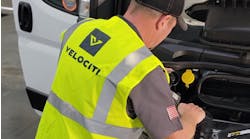Many vehicle service professionals are exposed to significant risks ranging from cut and puncture wounds to high abrasion, impact, broken bones and vibration injuries. For the employer, this means expensive downtime and medical costs.
It has been estimated that these types of hand injuries amount to hundreds of millions of dollars per year in lost production time, medical expenses and workers' compensation.
According to the National Safety Council (NSC), cuts/scrapes and puncture injuries cost $11,454, and more severe lacerations, impact and puncture injuries cost $16,432 for medical and indemnity costs.
Second to back injuries, the most recent report from the Bureau of Labor Statistics states a full 25.3 percent of all work related injuries resulting in days away from work were hand related. However, the actual numbers are likely to be higher as many injuries are unreported.
For many, the use of hand protection isn't mandatory, and in many instances, it is overlooked.
The truth is, reducing the impact hands take when performing certain tasks can protect joints from excessive wear, as well as avoid blistering, cuts and heavy impact injuries, and in some cases, prevent hands from being aesthetically disfigured.
It's safe to say that wearing the proper hand protection for vehicle maintenance can drastically reduce hand injuries in the workplace, but worker safety is more than just putting on a pair of gloves.
Statistics from the NSC show that 70 percent of workers that experienced a hand injury on the job were not wearing gloves. The remaining 30 percent of injuries were due to inadequate, damaged or improper use for the type of hazard present.
No longer does the saying "if the shoe fits, wear it" apply. High-performance glove manufacturers are making big strides in improving fit, feel, and functionality all while protecting the technician and improving their performance on the job.
GLOVE TECHNOLOGY
The days of the "one size fits all" work glove are over, and that surely is a good thing.
High performance glove manufacturers give an enormous amount of attention to the size and shape of the hand. Anatomical correctness insures a snug fit for better control and maneuverability.
Further, the incorporation of tapered stretch side panels has greatly improved the gloves fit between the fingers for improved manual dexterity that enables the technician to tackle numerous tasks with ease. If a vehicle service technician has to remove his/her gloves for relief, their safety is compromised. Fit, feel and functionality are critical elements for glove manufacturers and major improvements have been made.
By way of example, Mechanix Wear is working with a variety of fabrics and protective materials that improve durability and performance more effectively for task specific hand protection. A glove designed for an individual diving into an engine bay isn't the same glove a construction framer would use.
Now, many glove manufacturers use synthetic leather, such as Clarino, because of its versatility as an alternative to more expensive sued and top-grain leather. The major advantage to synthetics is the ability to wash the material unlike natural leather.
Of course, there are many types of materials incorporated in high performance work gloves, such as Kevlar, Nitrile, TrekDry and rubberized materials for water resistance, as well as Nomex and Carbon-X for flame resistance.
Outer protection, like EVA foam padding or Thermal Plastic Rubber, can be sonic welded to the glove providing impact protection to injury prone areas of the hand, such as the fingers, palm, knuckles, wrist and Metacarpals.
Form fitting Spandex is widely used to insure a snug fit and is often used as a base layer in which additional materials are added to improve wear and protection.
Various types of leathers offer comfort, extreme durability, and heat protection. These include cow, pig, goat and the most durable and supple of them all, kangaroo.
Building a glove from the base is truly a work of art as much as it is an engineering feat. New technology creates a hurdle with cost, and it's important to recognize the features that work best for the type of application.
TASK-SPECIFIC HAND PROTECTION
Maximizing individual safety and productivity has led to specialty hand protection utilizing unique features designed to protect workers performing specific tasks. Furthermore, task specific hand protection is becoming a mandatory piece of PPE (personal protective equipment) which has to meet specific standards for specific industries.
It is the responsibility of the PPE supplier to correctly classify their products and not overstate product features and performance ratings. This allows the individual or employer to carefully select the proper PPE.
Vehicle service professionals are exposed to significant risks whether they are diving into an engine bay, repairing braking systems, fixing trailer refrigeration units, dealing with fluids, balancing wheels, doing electrical work, and the list goes on and on.
As a technician, it is important to be conscious of the present hazards when considering a task specific work glove. Gloves designed for vehicle service type of work demand impact protection on the top of the hand, palm padding to reduce blisters and hand fatigue when wrenching, textured grip for handling tools, fingertip reinforcement, a snug fit for optimum comfort and dexterity, high abrasion resistant materials, heat resistance and chemical resistant coating when changing oil and other fluids.
Such features will not only protect the technicians hand, but will improve overall work performance by enabling the technician to work with more power and control.
Those who've experienced a hand injury - no matter how big or small, know that it can be extremely hindering. The purpose of specialty hand protection is to maximize individual safety and productivity when technicians are performing their jobs.
Safety is a cheap and effective insurance policy. As the saying goes: "Know safety, no injury. No safety, know injury."



